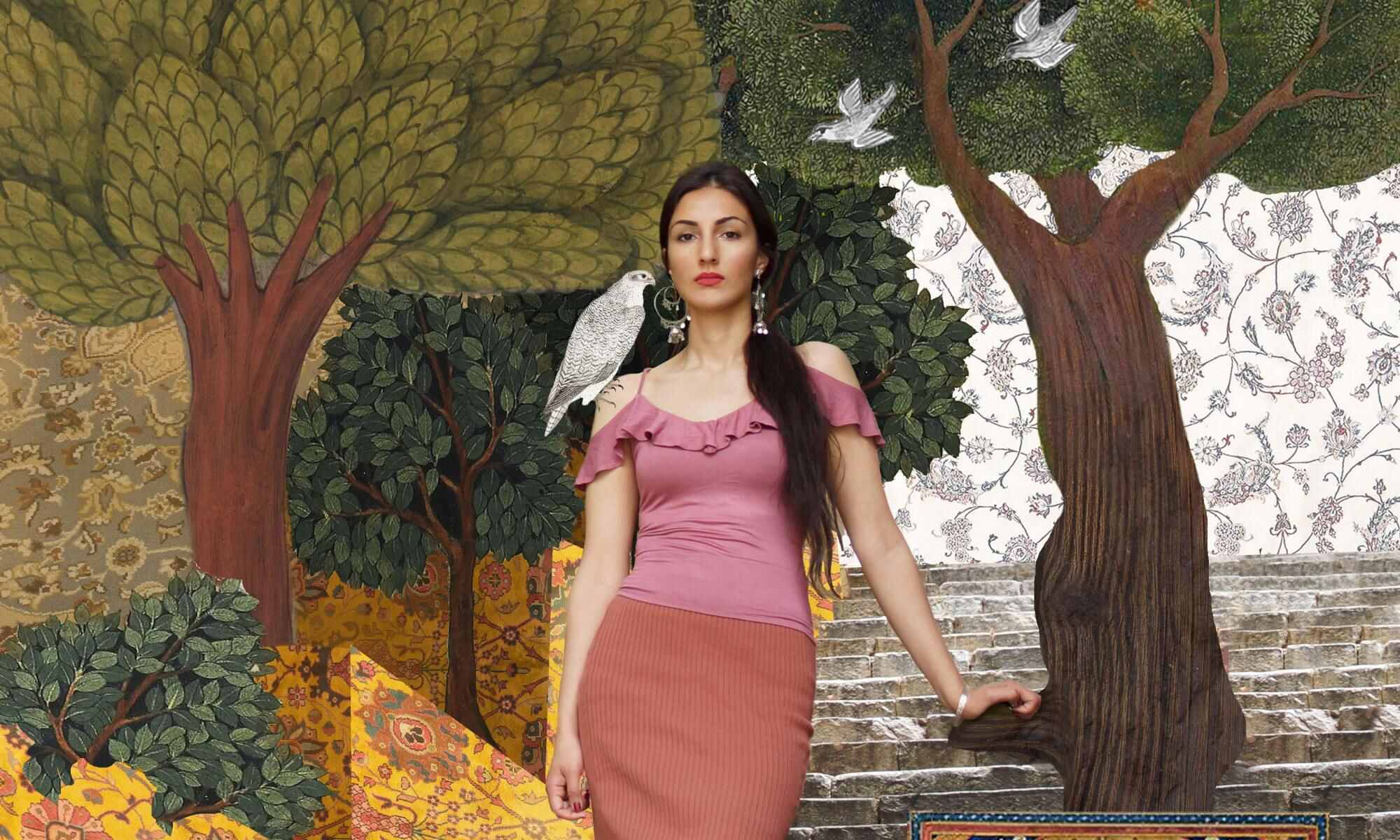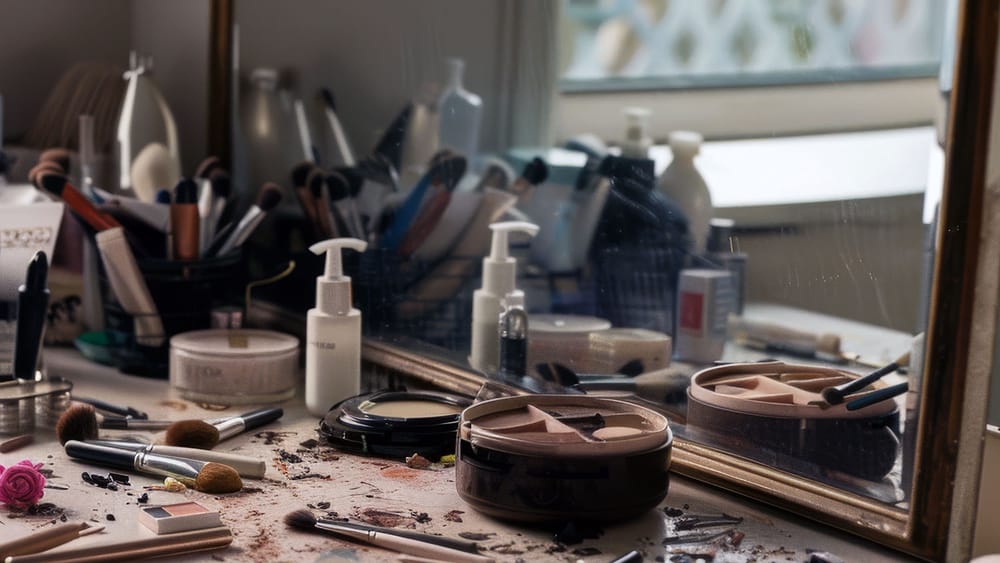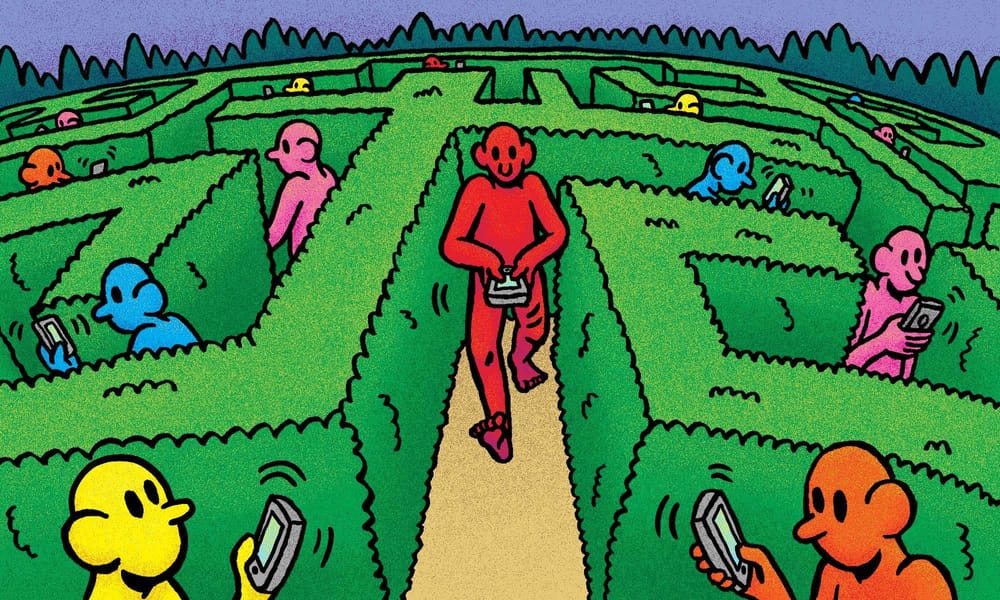In the face of the many seemingly unsolvable problems of the world, it takes courage, faith and determination to take on the role of a superhero. Colours of a Changemaker is a series of interviews with Black, Indigenous and People of Colour from around the world who are using their vocation to create social and environmental change. As Gandhi once said, we must be the change we want to see in the world, and these changemakers are doing just that through their art, music, written works, social platforms and much more.
Keerat Kaur is a Canadian architect and interdisciplinary artist who explores her Sikh-Punjabi roots through a plethora of mediums including built form, interior spaces, painting, sculpture, hand embroidery, drawing and music. In this interview, she talks about her purpose as an artist, how the richness of Sikh literature and Punjabi folklore inspire her pieces and how she takes this inspiration and interweaves it with her own unique surrealist style to produce works that push the boundaries and take viewers on a spiritual journey through space and time.
At what age did you begin creating art and how did it become a serious career path for you?
I’ve been creating and making since as early as I can remember; it was always my favourite thing to do. Anytime I would hear a story, I would want to pair it with visuals. It was also a way for me to live out my dreams. My parents were really great in providing my brother and me everything that we needed growing up, but if there was ever anything that I wasn’t allowed to have, like a toy in the store, I would go home and try making it or drawing it out myself. I remember asking my parents for a fish tank, and I wasn’t allowed to have one, so I took some markers and I drew it on a piece of paper. I even remember cutting out the shape of the fishbowl to make it as real as possible; I still have that drawing.
Art became a career path for me very gradually. I experimented and explored with different ways of outputting my ideas. People started valuing and connecting with my work more and more, and eventually, my art began sustaining me.
Tell us about the kinds of mediums and materials you use to create your art.
I’ve always been really keen on bettering my technical skills and picking up new ones. I’ve experimented quite a bit in this arena. Music and 2D drawing were my first loves. Because of my heavy interest in different forms of making and expressing, my medium of choice is always going to change. I’ve seen that evolution happened quite often and quite recently. Two years ago, I did an artist residency, here in London, Ontario, which allowed me to explore ceramic sculpture. This was an art form that I had only experimented with when I was younger, during trips to Punjab. Ever since that residency in 2019, ceramic sculpture has become a significant part of my practice.
What do you feel is your purpose as an artist? What moves you and what is the message you wish to convey through your art?
My purpose as an artist is to clarify messages and present them in ways that allow viewers to better absorb the message and help enrich their understanding of it. It’s a way to give them a springboard to extrapolate their own thoughts. Sometimes it’s sensory stimulation that allows us to take internal trips: hearing a piece of music will allow you to feel certain emotions; seeing a visual work in a certain spatial setting will evoke different thought processes.
The fascinating thing about art is that experiencing it can take you back to places that you’ve been to. It’s a sensory trigger, so it can take you to familiarity while also exposing you to complete novelty.
The Valour of The Young Princes II
How has your heritage impacted you artistically and how do Sikh literature and Punjabi folklore inspire your art?
Sikh literature forms the basis of most of my work, and Punjabi folklore and artisanal crafts are how that work manifests. I give a visual dimension to stories of Sikh history and the poetic devices used to describe it. I give literal, visual representation to those abstract metaphors. For example, a recent painting that I completed in early 2021, The Valour of The Young Princes II, speaks about the Battle of Chamkaur, in which [the 10th Sikh Guru and leader of the Sikh faith] Guru Gobind Singh’s teenage sons were martyred. The way that the battle is described in Suraj Prakash Granth—one of the most prominent Sikh historical texts, written by Kavi Santokh Singh [an 18th-century poet and historian]—is a combination of visually dense metaphors and symbolism. For example, Guru Gobind Singh is described as the captain of a ship, and the ship is a metaphor for the fort in which he and his Sikhs sought refuge. In my representation, I have shown the fort as an amalgamation of a wood-construction ship with architectural elements of what the original structure would have looked like. You see a brick ship with plaster cladding, ornamentation and domes that would have existed in the original built form. The Mughal army that attacked the Guru and his Sikhs is described as a tumultuous ocean, attempting to overthrow the ship. And so, characters of the army are embedded in the waves, fighting the Sikhs and surrounding the fort-ship.
How has your formal training in architecture influenced your pieces?
Being a student of architecture and being a practising architect has opened up another dimension in my brain and it’s fine-tuned the way that I plan and think about my work. It’s made my process very sequential, and all of the steps that I take are intentional. My training and work in architecture has also taught me how to manage logistics and how to run an enterprise. It’s helped support how I structure my business plan as an artist and creative.
On your website, you say “human emotions are felt and represented in the realm of spiritual surrealism.” What is spiritual surrealism and how do you present it in your art?
In my work, human emotions are felt and represented in the realm of spiritual surrealism, which is both a thematic and stylistic, aesthetic approach. It is a way of using hyper-realistic techniques to portray surrealism and abstract thought, but it’s also a place where you can connect with the otherworldly and connect with things that are not seen and are typically only heard and felt.
The Living Encyclopedia 2019
Do you have a favourite piece of art you’ve worked on? If so, why is it your favourite? Tell us about its story.
It’s tricky to choose a favourite work of art that you’ve done yourself, but I do have one. It’s a painting called The Living Encyclopedia 2019. This piece is really close to me because it encompasses the source of my practice. It’s an acrylic and oil painting on art board and it’s about 16 x 20 inches in size. In it, you see a photo-surrealist depiction of my father, engrossed in reading and researching a passage from Suraj Prakash Granth. If you read closely, he’s actually examining a passage from “Nanak Prakash Granth,” which is the beginning portion of Suraj Prakash Granth focusing on the life of Guru Nanak, the first Sikh Guru. This painting illustrates my biggest inspiration and my first teacher. My dad is the one who introduced me to Sikh literature (and Sikh culture, in general), and he was definitely one of the main people that encouraged me to express myself through all these different artistic mediums. This painting honours his contribution to my life.
What is your best piece of advice for an aspiring or budding artist?
Listen to yourself and listen to what your heart is telling you. You should listen to what your heart is saying, not what you think it should be saying. You don’t necessarily have to know which direction you’re going to go in or where you’re going to end up. As long as you’re listening to yourself, you’re answering your questions. If you are passionate and interested in something, make sure that you’re surrounding yourself with it. Engross yourself in an environment where you can learn about that topic, actually apply the knowledge and find people that are also involved in the field.
I really don’t think that there’s a destination. It’s all about the journey and so it’s important to embrace the path and all of the little steps you have to take in your everyday life to reach your goals. Once you reach that goal, it’s great for a minute, but then you want the next thing. Appreciate the little things that you have to do, whether it’s admin and gruelling research—embrace it all.
Focus is crucial, but as long as you plan the best that you can and set goals for yourself, anything that you do is going to contribute to something, somewhere. Don’t ever feel like you’ve wasted time on anything because all experience shapes who we are and it eventually comes in handy. You will learn skills and pick up important pieces of information that will surprise you with their usefulness. My training in Indian classical music has influenced my visual art, which has influenced my architecture practice, which, in turn, has influenced both my musical expression and my visual art. It’s never too late to start anything; it’s never too early to start anything, and anything that you’ve done up until now has immense value.
You can follow Keerat Kaur on Instagram here, on Twitter here, and you can learn more about her on her website here.







